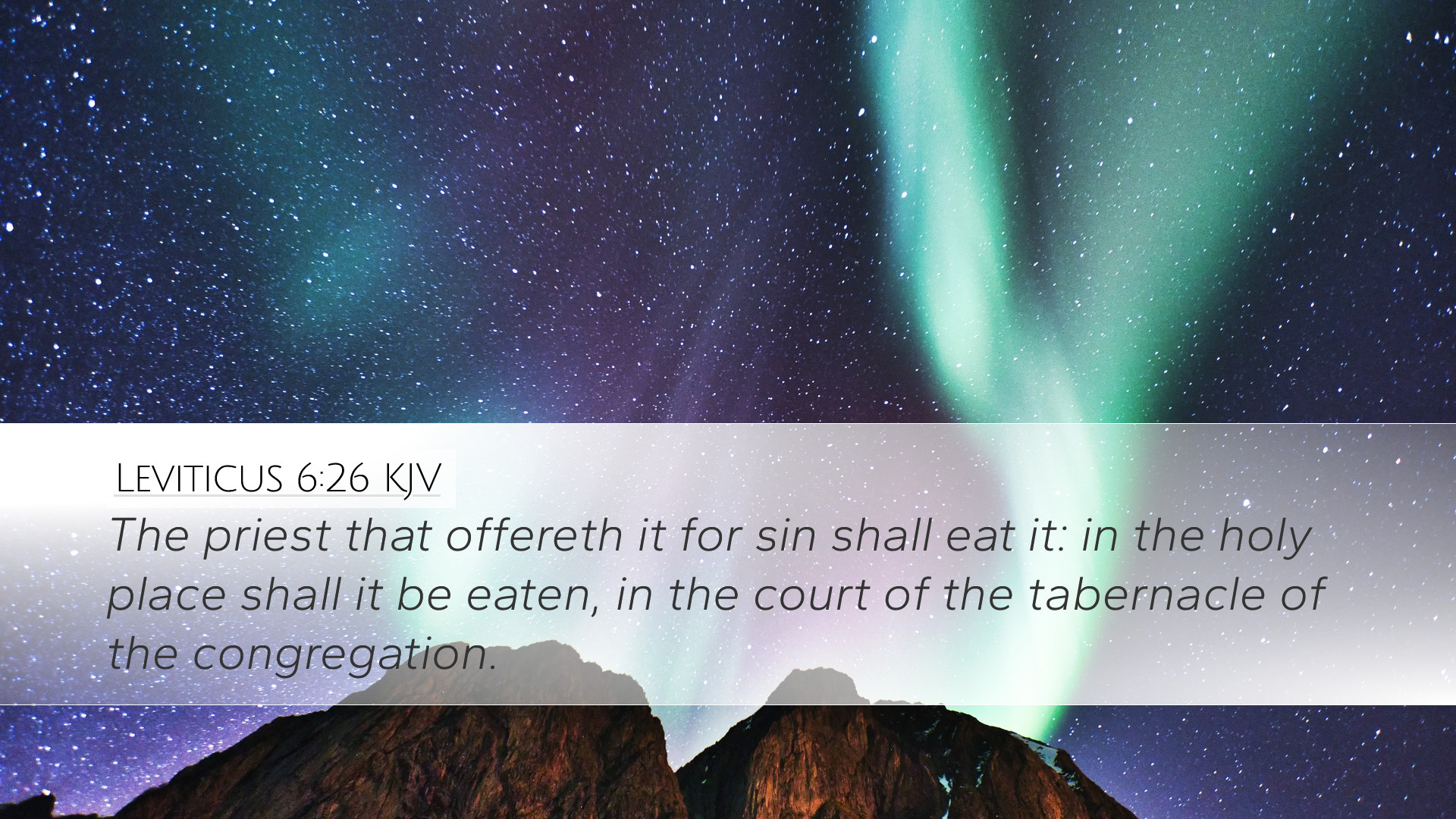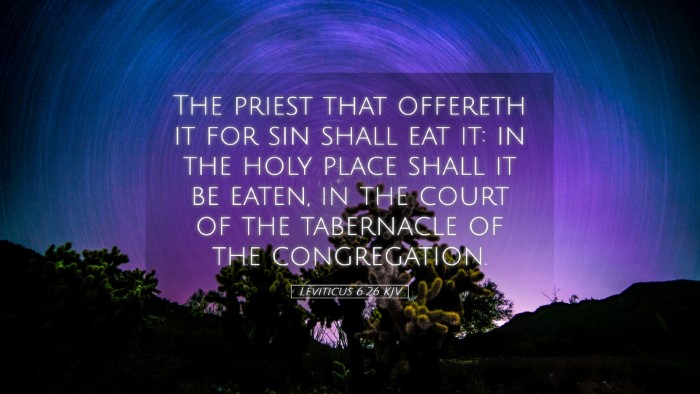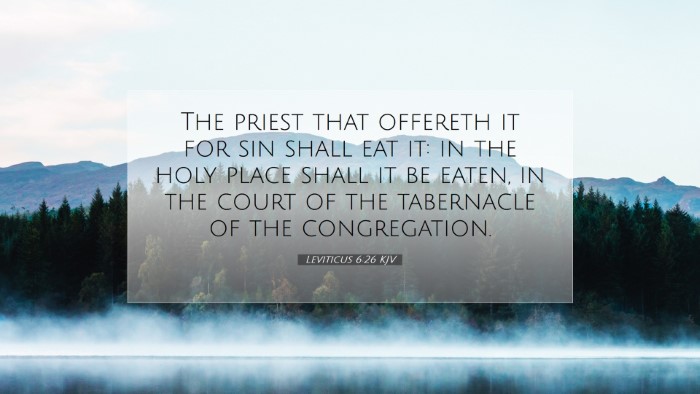Commentary on Leviticus 6:26
Verse Analysis: "The priest that offers it for sin shall eat it: in the holy place shall it be eaten, in the court of the tabernacle of the congregation."
Introduction
The instruction contained in Leviticus 6:26 offers profound insights into the sacrificial system of ancient Israel, embodying theological principles that resonate through both the Old and New Testaments. The participation of the priest signifies a sacred role in mediating between God and the people, emphasizing notions of atonement and holiness.
Historical Context
This verse is situated within the broader context of the Levitical laws regarding sacrifices and offerings. The book of Leviticus outlines the procedures for various sacrifices that the Israelites were required to observe, establishing a framework for maintaining a covenant relationship with God. This particular verse explicitly pertains to the sin offering, which aimed at atoning for unintentional sins committed by the community.
The Role of the Priests
Matthew Henry emphasizes the priests' unique role, noting that the task of offering sacrifices and consuming the remnants signifies their intimate involvement with the sacrificial process, embodying the community's atonement.
Albert Barnes elaborates further on this, describing how the consumption of the sin offering by the priests reflects their part in carrying the burden of the sins of the people. Their participation indicates a divine approval and sanctification of the offering.
Adam Clarke highlights that this ritual signifies the acceptance of the sacrifice by God, reinforcing the significance of the sin offering in restoring the relationship between God and the sinner through the priestly mediation.
The Importance of Eating in a Holy Place
The directive that the priest is to eat the offering in a "holy place" underscores the concept of purity and sanctity within the worship practices. This stipulation serves as a reminder that the consumption of holy offerings is an act of reverence.
Matthew Henry points out that eating signifies assimilation, suggesting believers must internalize the benefits of the sacrifice. The holy place denotes a set-apart location where divine presence dwells, emphasizing that only those who are consecrated (the priests) can partake fully in these sacred rites.
Theological Implications
This verse, when examined theologically, informs believers about the significance of atonement and the necessity of a mediator. The priest as a representative of the people reflects Christ's ultimate role as the High Priest, who, according to the New Testament, offered Himself as the final sacrifice for sin.
Albert Barnes emphasizes that just as the priests partook of the sin offering, believers today partake of Christ’s atonement spiritually, signifying an intimate relationship with God through Jesus Christ.
Adam Clarke adds that the symbolism inherent in this act implies that sin must be dealt with seriously, and that forgiveness involves a process of recognition and atonement—both critical elements in the Christian faith where confession leads to healing and restoration.
Application for Today’s Believers
For contemporary believers, Leviticus 6:26 carries essential lessons about the seriousness of sin and the necessity of sacrificial atonement. The holiness of the place of consumption indicates that today’s worship should also be approached with reverence, reflecting an understanding of the weight of sin and the grace available through Christ.
Matthew Henry encourages believers to reflect on their own lives, evaluating how they approach the presence of God. The act of meditation on the atoning work of Christ should lead to greater worship, confession, and renewal.
Albert Barnes stresses the importance of community in faith, reminding congregations that they share in the benefits of Jesus’ sacrifice and, as such, should encourage one another in maintaining purity and holiness in their walk with God.
Conclusion
Leviticus 6:26 serves as a critical reminder of the principles surrounding sin and atonement, presenting a vivid image of the priestly role that echoes the work of Christ in the New Testament. Understanding this verse deepens one’s appreciation for the historical sacrificial system while simultaneously illuminating the fundamental truths of the gospel, ensuring its relevance for pastors, theologians, and students of the Bible today.


